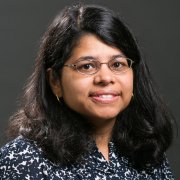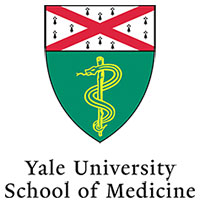Finding the Causes of Autism
The prevalence of ASD has been steadily rising, for a variety of reasons. One in fifty-nine children in the US have ASD, according to the Center for Disease Control, and the total cost of caring for these individuals has been estimated to be between $11.5 and $60.9 billion per year. These figures require a concerted effort by public and private agencies to fund research programs to better understand what causes ASD, develop targeted and effective treatments, and lessen the burden to families and society.
The Gupta Lab at the Yale School of Medicine’s Department of Pediatrics and Child Study Center is investigating some of the most extreme cases of ASD. The lab also expects to discover features of the disorder that could help treat children all over the autism spectrum. One of their major projects is to study late-onset, severe regressive autism, also known as Childhood Disintegrative Disorder (CDD). CDD is a rare type of ASD characterized by late-onset regression of language, social function, and/or motor skills. Children with CDD generally have two years, or more, of normal development before they begin to lose the skills they acquired. The Gupta Lab is the only group in the world studying this demographic using a comprehensive neurogenetic approach.
Funding their research has become very challenging through traditional sources, because CDD was lumped into the umbrella of ASD by the fifth edition of the Diagnostic and Statistical Manual of Mental Disorders (DSM-5). The rationale was that researchers did not understand the biology well enough to separate different forms of autism into distinct diagnostic entities, and clinical experts could not always agree on whether or not a patient met criteria for specific sub-diagnoses. That said, the families with children suffering with CDD have not disappeared. Furthermore, studying the phenomenon of regression in autism is critical because it affects a substantial proportion of individuals on the spectrum. Indeed, a recent meta-analysis of 29,035 individuals with ASD found a 32.1% prevalence of regression.
The Gupta Lab’s published study shows that there are important differences between CDD and other forms of autism at every level of analysis: clinical characterization, genetics, neuroimaging, and eye-tracking. The causes and treatments for CDD and potentially autistic regression may be different from other forms of autism, a finding that could help doctors everywhere offer better care to many children on the autism spectrum. \
Research at the Gupta Lab is highly multidisciplinary; they feel strongly that ASD must be tackled from multiple angles to truly understand how it develops. Their collaborators provide critical expertise in the following areas:
Comprehensive clinical characterization of patients
-
Pamela Ventola, PhD, Yale Child Study Center
-
Julie Wolf, PhD, Yale Child Study Center
Neuroimaging analysis
-
Kevin Pelphrey, PhD, George Washington University
-
Allison Jack, PhD, George Washington University
Eye tracking analysis
-
Frederick Shic, PhD, University of Washington
Meet the Team
In addition to Gupta, the following scientists are part of the Gupta Lab’s work:
Catherine Sullivan BA, MS, Research assistant
Catherine has over 10 years of experience in a wide variety of molecular biology techniques. She also has extensive experience in the bioinformatics analysis of large human genome sequencing datasets. She processed and analyzed all of the whole-exome (30 million base pairs of protein-coding sequence per person) and copy number variant data for the genetic investigation of CDD and other rare neurogenetic conditions. She also analyzes whole-genome sequencing data, which is 10 times larger than whole-exome data at 3 billion base pairs per person. She is the rare person who combines expertise in “wet lab” (bench top) and “dry lab” (bioinformatics) techniques to identify mutations associated with neurogenetic disorders.
Wenzhong Liu, MD, Research assistant
Wenzhong has over ten years of experience with a wide variety of molecular and cell biology techniques. He has built, from scratch, a major project in the lab to use the technology of induced pluripotent stem cells and genome editing to create cellular models of autism. He reprograms mature cells, such as blood cells, from patients into immature stem cells in culture. He then directs the stem cells to develop into neural cells in order to determine how genetic mutations associated with autism, such as those identified through sequencing studies, affect the development, structure, and function of neural cells. The studies are in progress, but he has already identified abnormalities in neural cell development and organization due to the presence of genetic mutations. These studies are giving us important clues to sites of dysfunction at the cellular level in autism. This platform will also serve to screen drugs that can reverse these abnormalities, leading to new treatments for autism.
Major projects of the Gupta Lab:
-
Childhood Disintegrative Disorder and Regression in ASD: The study of late-onset, severe regressive ASD as well as more usual cases of autistic regression. The Yale Child Study Center has the largest CDD cohort in the world, putting it in a unique position to study this disorder of unknown etiology. The Gupta Lab is conducting a comprehensive investigation of CDD consisting of: (1) expert clinical characterization, (2) the identification of candidate genes and gene expression analysis, (3) an analysis of the brain using MRI, and (4) the precise quantification of the social behavioral phenotype using eye tracking. Recently the lab published the first neurobiological study of CDD, “Neurogenetic Analysis of Childhood Disintegrative Disorder,” in Molecular Autism. It is now essential for the lab to confirm their results in a larger CDD cohort. They plan to include an additional 50 CDD families, and cohorts which will provide important comparisons to CDD (total 250 subjects).
- Stem cells: Human stem cell modeling of autism-associated genetic mutations. A major limitation of molecular and cellular studies of ASD has been the inability to study living brain tissue from patients. The methods and techniques used in this project allow the lab to determine how genetic mutations affect molecular and cellular processes and, thereby, contribute to ASD. While many facets of autism genetics will be examined in this project, the most important development is the lab’s plan to apply stem cell modeling to CDD. Gupta expects that this project will not only lead to the development of a high-throughput platform to screen the effects of mutations but also a method of screening drugs which reverse abnormal phenotypes they identify.
There is no known cure for Autism Spectrum Disorder (ASD), and its prevalence is steadily rising. Current treatments are limited to behavioral interventions because of the lack of precise knowledge of how the disorder develops. Dr. Abha Gupta, Assistant Professor of Pediatrics at the Yale School of Medicine, and her colleagues at the Yale Child Study Center, are hoping to change that by looking at possible causes for ASD through human genetics and neuroscience.
Bio
Dr. Gupta has been fascinated by science for as long as she can remember. While attending medical school, she decided to enroll in the neuroscience PhD program, which she felt was the most mysterious of the biological sciences. Cognitive neuroscience and psychiatric disorders represented the final frontier of biology. Discouraged by professors from focusing on this topic as a thesis, because of its preliminary stage, she instead completed her PhD investigating human gene therapy for retinal disorders.
During this time, she came across a one-page article in Newsweek magazine about autism spectrum disorder (ASD). Reading this article was a life-changing experience, and she was completely hooked by the mystery of a disorder which affects some of our most human qualities: sociability, emotions, cognition, abstract thought. Gupta’s career decisions since then have been driven by this interest. She trained to become a developmental-behavioral pediatrician to gain expertise in evaluating children with ASD and pursued postdoctoral training in the genetics of ASD.
Now Gupta is an Assistant Professor in the Department of Pediatrics and Child Study Center (CSC) at the Yale School of Medicine. Her clinical expertise is in developmental-behavioral pediatrics, with a specific interest in ASD. She has extensive experience in the clinical evaluation of children with developmental disabilities and is the director and attending physician of the autism diagnostic clinic in the Department of Pediatrics. Her research background is in neuroscience (PhD) and the genetics of complex human disorders. Her research career goal is to bridge the fields of human genetics and neuroscience to elucidate the pathophysiology of ASD. Gupta is continually motivated by the children and families she cares for and is committed to tackling ASD.
In the News
Slate Magazine
Yale Medicine Magazine
Yale Medicine doctors are exploring genetics in the hope of developing treatments for the fast-growing disorder of autism


